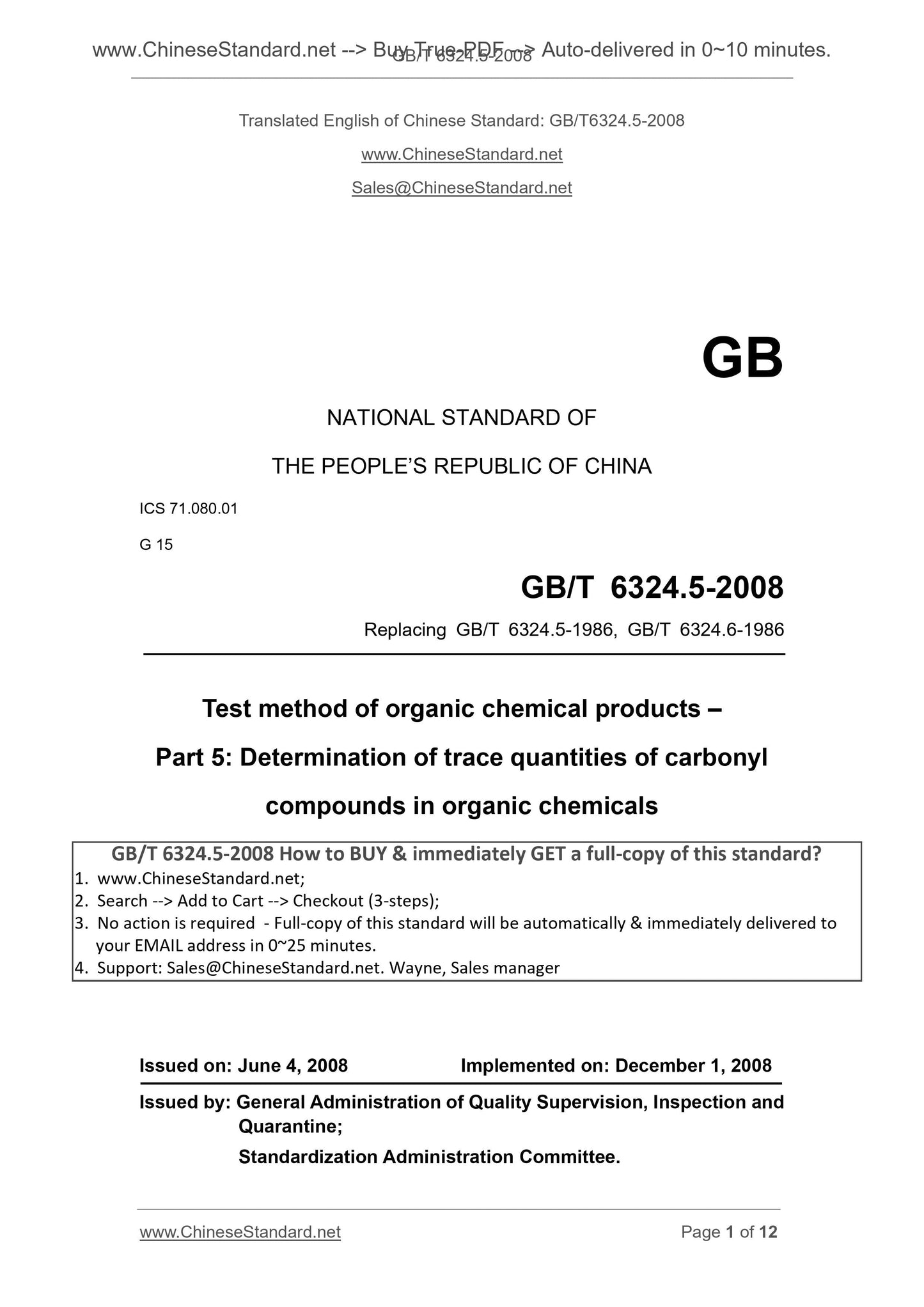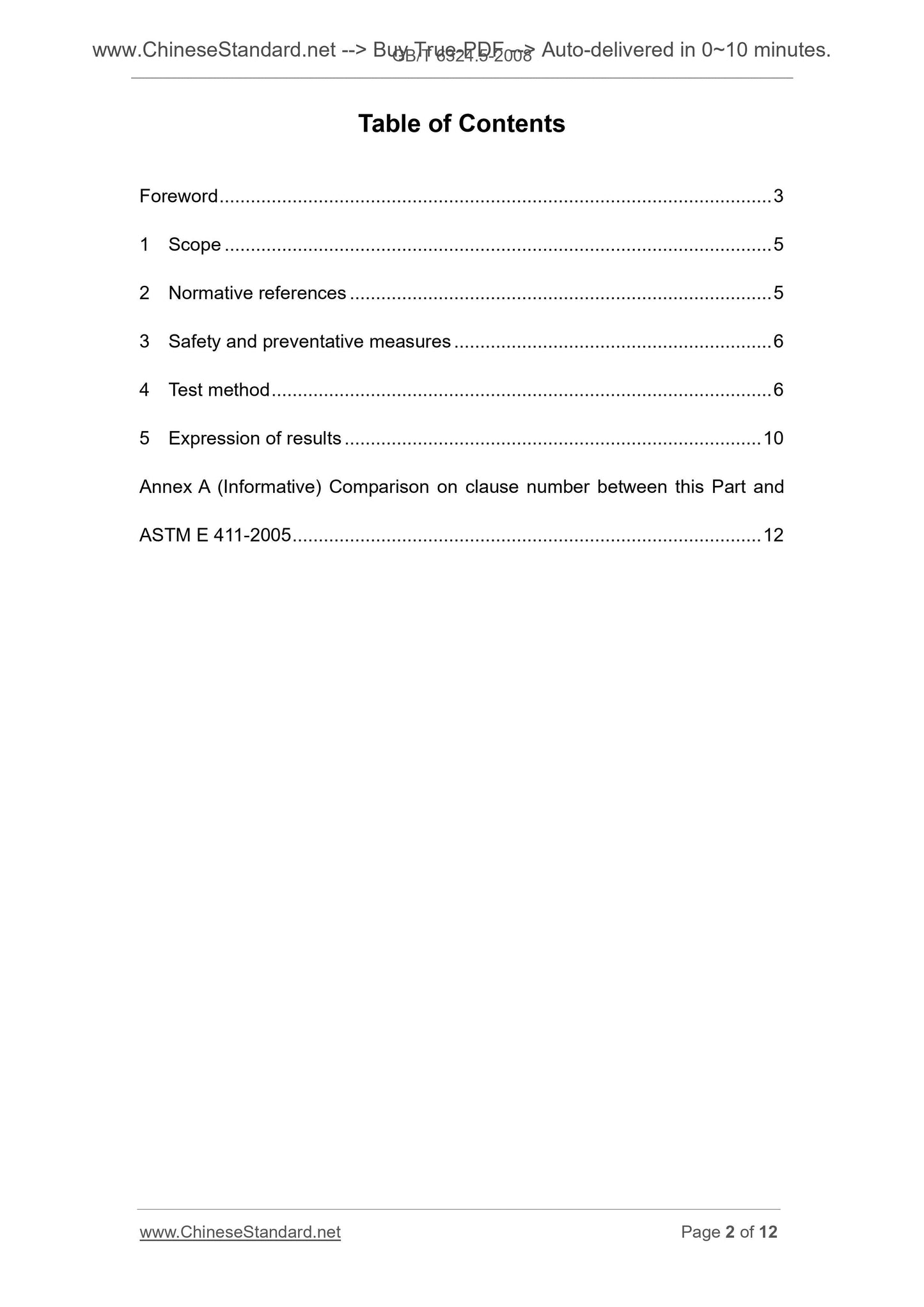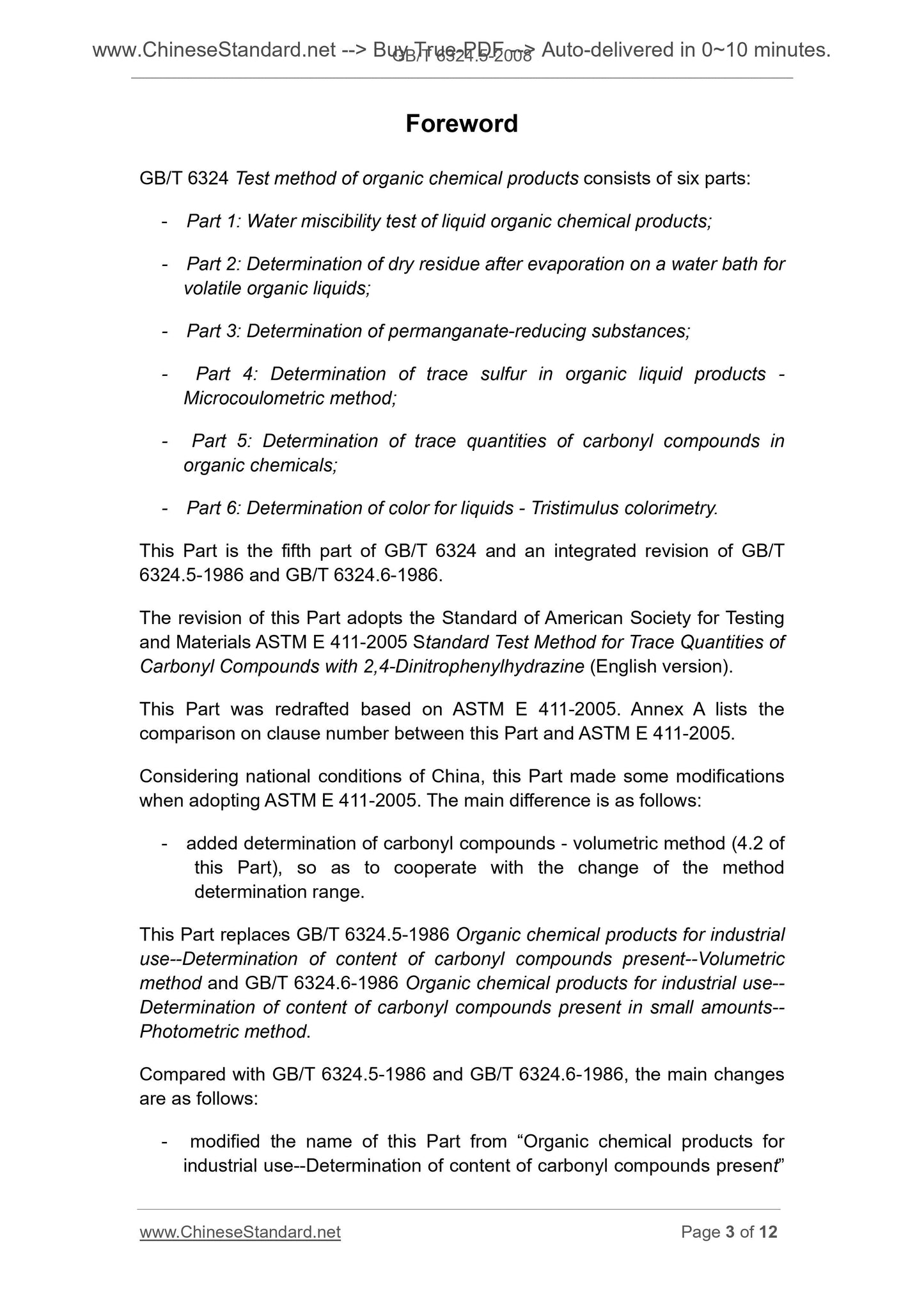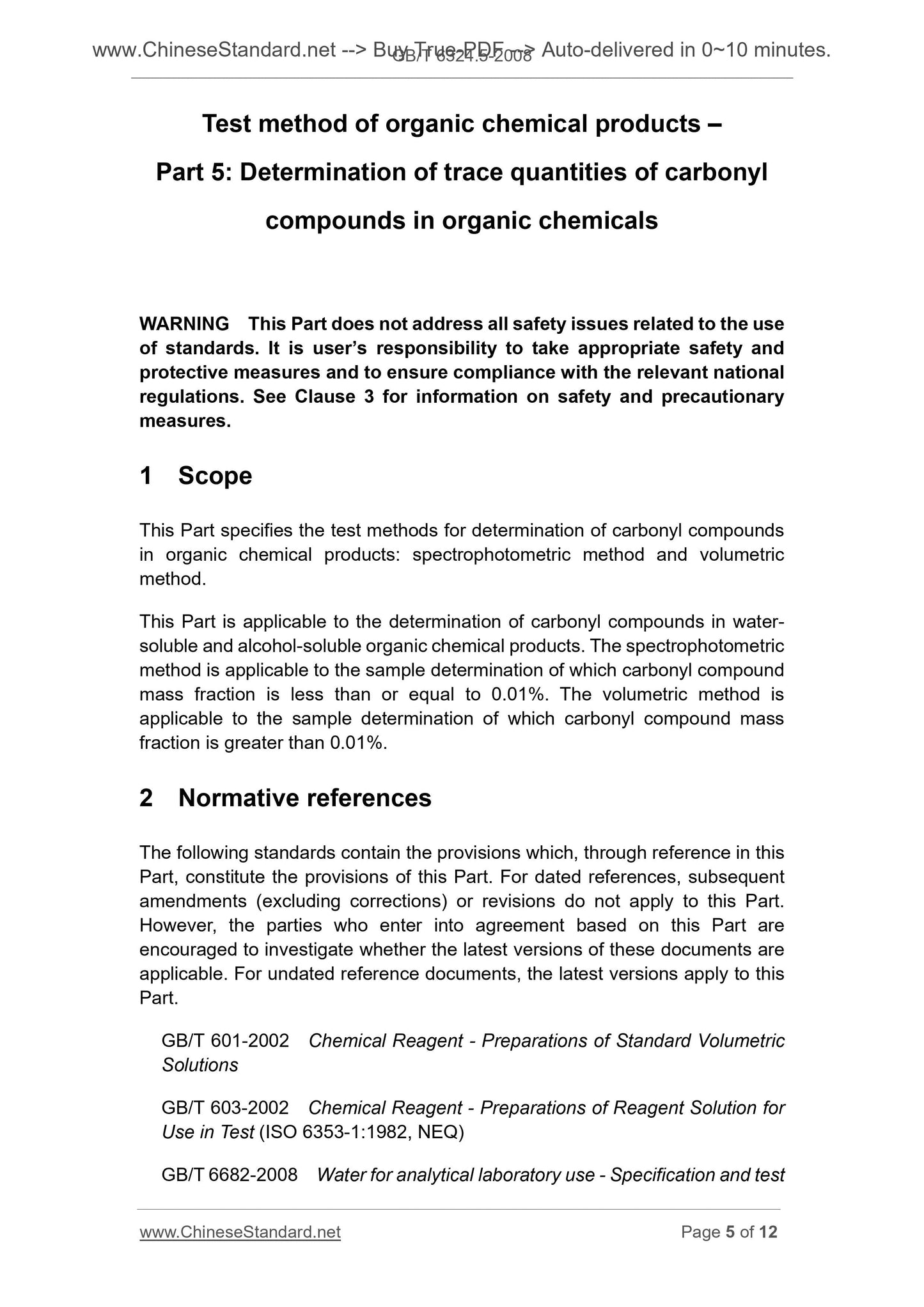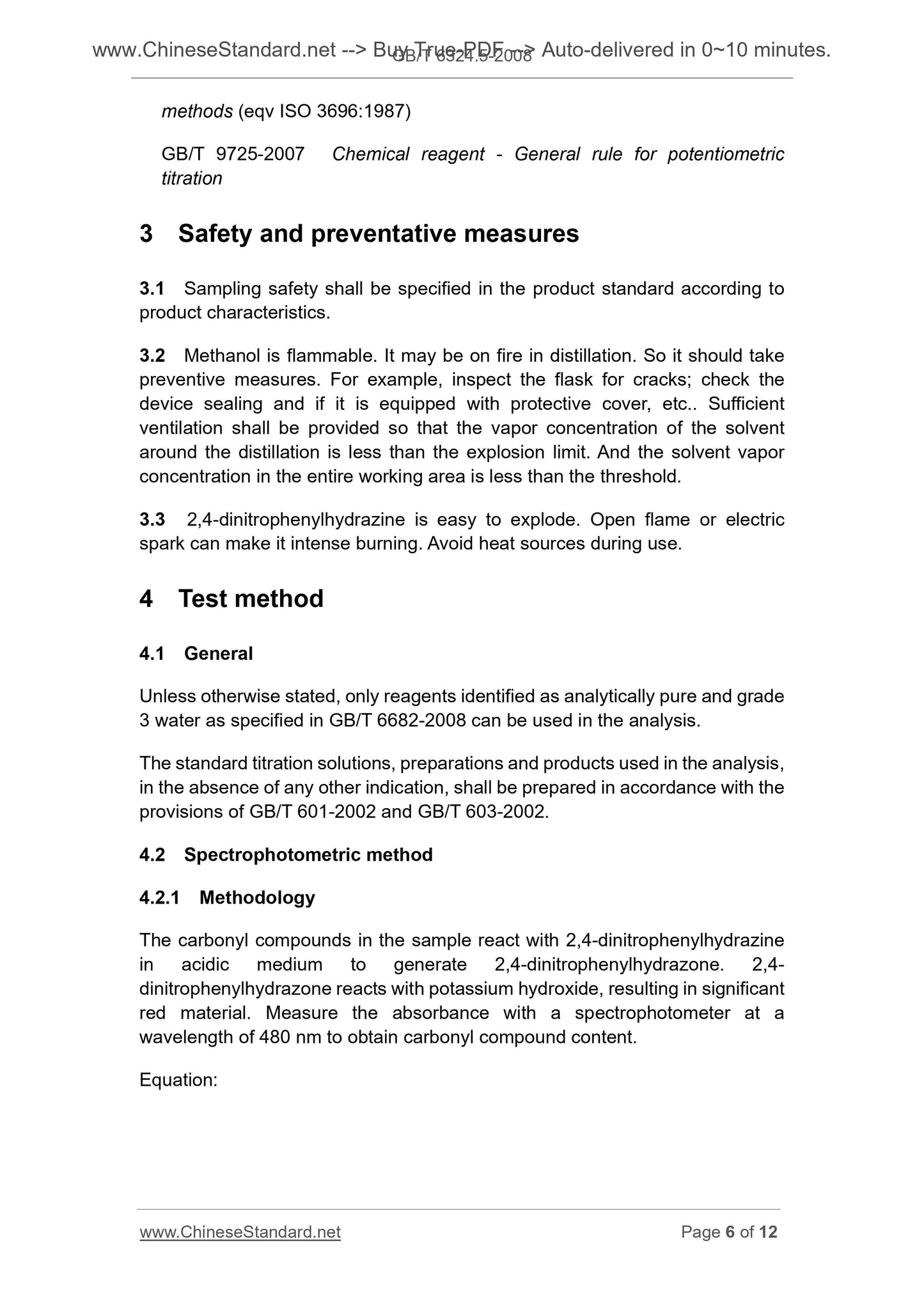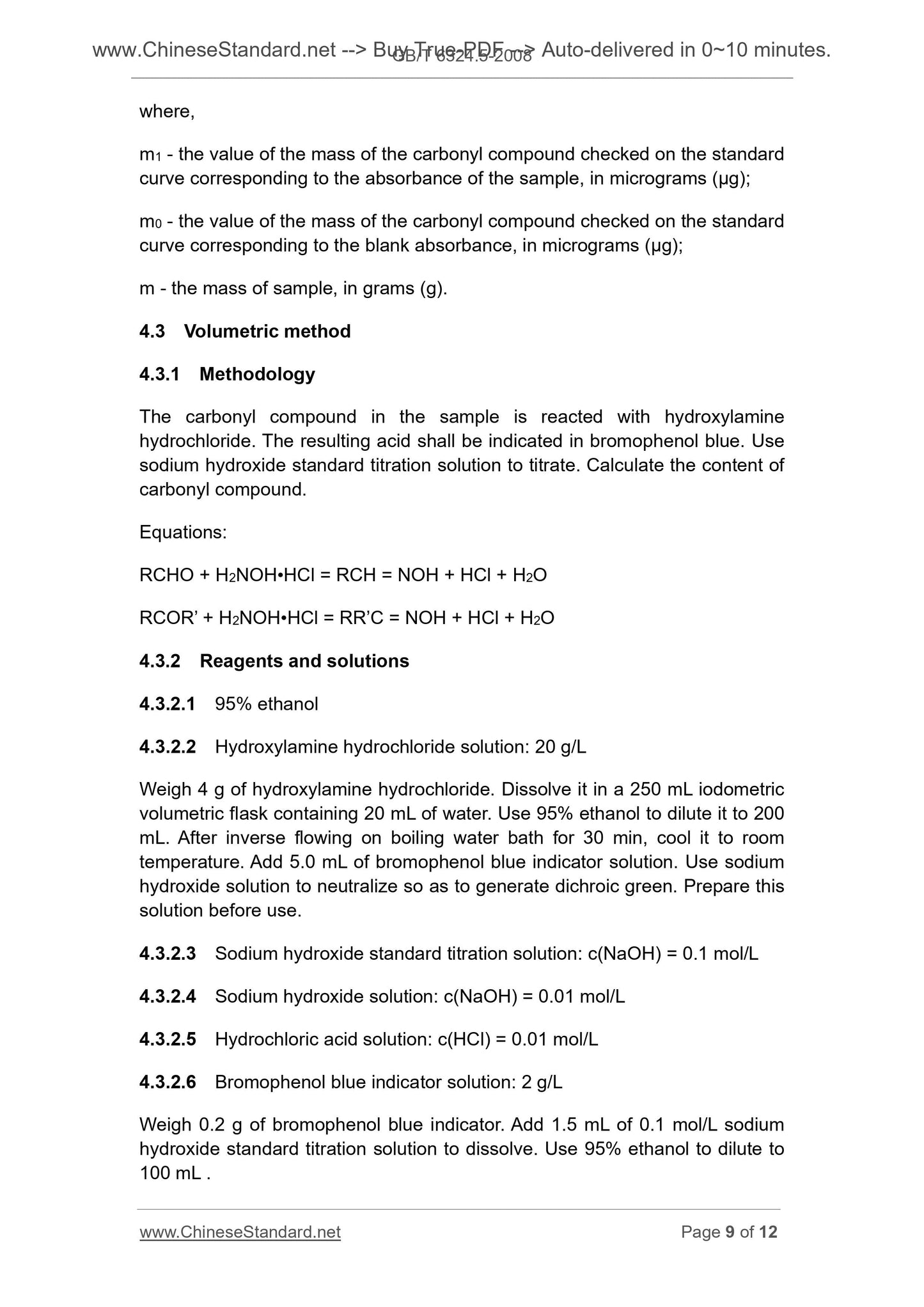1
/
of
6
www.ChineseStandard.us -- Field Test Asia Pte. Ltd.
GB/T 6324.5-2008 English PDF (GB/T6324.5-2008)
GB/T 6324.5-2008 English PDF (GB/T6324.5-2008)
Regular price
$90.00
Regular price
Sale price
$90.00
Unit price
/
per
Shipping calculated at checkout.
Couldn't load pickup availability
GB/T 6324.5-2008: Test method of organic chemical products -- Part 5: Determination of trace quantities of carbonyl compounds in organic chemicals
Delivery: 9 seconds. Download (and Email) true-PDF + Invoice.Get Quotation: Click GB/T 6324.5-2008 (Self-service in 1-minute)
Newer / historical versions: GB/T 6324.5-2008
Preview True-PDF
Scope
This Part specifies the test methods for determination of carbonyl compoundsin organic chemical products. spectrophotometric method and volumetric
method.
This Part is applicable to the determination of carbonyl compounds in water-
soluble and alcohol-soluble organic chemical products. The spectrophotometric
method is applicable to the sample determination of which carbonyl compound
mass fraction is less than or equal to 0.01%. The volumetric method is
applicable to the sample determination of which carbonyl compound mass
fraction is greater than 0.01%.
Basic Data
| Standard ID | GB/T 6324.5-2008 (GB/T6324.5-2008) |
| Description (Translated English) | Test method of organic chemical products -- Part 5: Determination of trace quantities of carbonyl compounds in organic chemicals |
| Sector / Industry | National Standard (Recommended) |
| Classification of Chinese Standard | G15 |
| Classification of International Standard | 71.080.01 |
| Word Count Estimation | 8,828 |
| Date of Issue | 2008-06-04 |
| Date of Implementation | 2008-12-01 |
| Older Standard (superseded by this standard) | GB/T 6324.5-1986; GB/T 6324.6-1986 |
| Quoted Standard | GB/T 601-2002; GB/T 603-2002; GB/T 6682-2008; GB/T 9725-2007 |
| Adopted Standard | ASTM E411-2005, MOD |
| Regulation (derived from) | National Standard Approval Announcement 2008 No.9 (Total No.122) |
| Issuing agency(ies) | General Administration of Quality Supervision, Inspection and Quarantine of the People's Republic of China, Standardization Administration of the People's Republic of China |
| Summary | This standard specifies test methods for organic chemical products Determination of carbonyl compounds: spectrophotometry, volumetric method. This section applies to the determination of water-soluble and alcohol-soluble organic chemical products of carbonyl compounds content. Spectrophotometric carbonyl compounds suitable for the mass fraction is less than or equal to 0. 01% of the measured samples. Capacity Act applies to light -based compounds measured mass fraction higher than 0. 01% of the sample. |
Share
